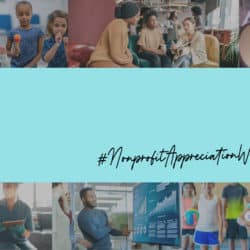This week: Sector responses to residential school discoveries in Kamloops, anti-Muslim terror in London, and anti-Asian hate crimes in Vancouver; progress on S-222; new findings on LTC performance during COVID; and calls for investing in digital infrastructure for charities and non-profits coming out of the pandemic.
Oh, Canada
In the wake of the discovery of the remains of 215 children from Tk’emlúps te Secwépemc First Nation and those who attended Kamloops Indian Residential School, Stephanie Scott, executive director of the National Centre for Truth and Reconciliation, wrote, “In our grief we hold ceremony, we bring little shoes to the steps of the perpetrators, we pour out our shared trauma on social media, we share contact information for crisis lines, we lower flags and turn the country orange.”
The Circle on Philanthropy and Aboriginal Peoples in Canada (The Circle) sent out “prayers and love” across Turtle Island and also links to Truth and Reconciliation Commission (TRC) Reports, including Where Are the Children Buried? and the 266-page fourth volume of the final TRC report, Canada’s Residential Schools: Missing Children and Unmarked Burials.
IndigiNews lists ways that non-Indigenous people can respond, including following Indigenous journalists and donating to the Orange Shirt Society. Kris Archie, CEO of The Circle, recommends a Twitter thread/guide about how to interact with Indigenous people online. Number eight: “We are survivors of genocide,” the author writes. “We deserve to rest.”
Cindy Blackstock, executive director of the First Nations Child and Family Caring Society and TRC Honorary Witness, pointed out that the government is well able to take concrete action when it wants. “The [International] Space Station, population six, has clean water to drink,” she said, referring to long-standing boil-water advisories in 33 First Nation communities. “They also have high-speed internet access, and only 35% of First Nations have that.”
Statements by Imagine Canada and the Ontario Nonprofit Network (ONN) reflected on the sector’s legacy of colonialism, with the ONN acknowledging, “We have not prioritized using our social, political and financial capital to decolonize and advance truth and reconciliation.” The network listed five ways the sector can take action, including learning about Indigenous histories and contemporary issues through the University of Alberta.
(The National Indian Residential School Crisis Line is available for survivors on a 24/7 basis, at 1-866-925-4419.)
Reckoning with racism, past and present
From the Foundation for Black Communities to Inspirit Foundation, Canada’s non-profit sector condemned the brutal and racially motivated murder of the London, Ontario, family on June 6 and called for tougher measures to combat hate crimes.
“We will not be silenced. We will #deleteracism and Islamophobia by our words and actions,” tweeted the Canadian Council of Muslim Women, providing a link for the Digital Anti-Racism Education (D.A.R.E.) project and a workshop series on anti-Islamophobia and countering cyberhate. (Register here.)
A statement from the Institute of Islamic Studies points out that the attack “speaks to a larger, more pernicious state of bias, discrimination, and violence across our various institutions.” A video series created by Islamophobia-is.com in the aftermath of the 2017 Quebec mosque attack delves deeper into issues at the root of Islamophobia.
On The Big Story podcast – “Islamophobia in Canada Is Getting Worse. Will Canadians Confront It?” – the host notes, “This week, Canada’s reckoning with its racist history was interrupted by its racist present.” Guest Fatima Syed, a journalist and Philanthropist contributor who has been covering the story for The Guardian, said that, yes, there is deep sadness right now. “But there’s also deep anger that this could all have been avoided.”
Hate-crime capital
The Muslim community is not alone in facing racism. In early May, Bloomberg dubbed Vancouver the “anti-Asian hate crime capital of North America,” citing a 717% increase in hate crimes in 2020, continuing a grim tradition of racism dating back to the 1800s. A report by the Toronto chapter of the Chinese Canadian National Council documents an increasing number of racially motivated attacks across the country.
New online platforms, such as #Elimn8Hate and Surviving Hate, seek to collect information about nationwide racist incidents that might not make it into police reports. Read more about this issue in coverage by J-Source.
The great too-white North
A recent study from Nature Canada, Race and Nature in the City: Engaging Youth of Colour in Nature-Based Activities, finds that while racialized youth are interested in nature, they face numerous barriers to participating in nature-based activities. Environmentalism, conservation, forestry, and outdoor recreation are all fields “dominated by a river of white faces,” the researchers note, causing youth to perceive the great outdoors as “white spaces” where they fear racist comments or physical violence.
To help create a more inclusive nature experience, a group of racialized Torontonians has created an online campaign called AllOut to “profile the way in which people from our backgrounds are out there now,” they told the Toronto Star. Recent posts include a TikTok video about how to adjust a bicycle helmet and suggestions for “wooded walks” in the GTA.
Where there’s grass, there’s hope?
A report by Nature United shows how Canada could offset 11% of its greenhouse gas emissions annually by implementing natural climate solutions that are “broadly scalable and deployable” right now, such as protecting grasslands and restoring wetlands.
Tyson Atleo, a hereditary chief-in-line of the Ahousaht Nation and NCS program director for Nature United, told The Narwhal that natural climate solutions provide an “opportunity for our communities to express our cultural values and lead in work, such as the protection of ecosystems.”
Partnerships with Indigenous communities are crucial, the report notes, both because they respect Indigenous rights and territories and provide access to Indigenous knowledge with “time-proven and effective approaches for land stewardship and biodiversity conservation.”
Don’t be afraid of the for-profit bogeyman
An article in The Conversation calls the long-term care (LTC) COVID-19 crisis, during which almost 4,000 LTC residents in Ontario died, a “humanitarian catastrophe.” While researchers and advocates debate outcomes of for-profit versus non-profit care, a recent study published in Canadian Public Policy finds that government-run homes outperform both models.
When researchers modelled predicted outcomes of COVID-related deaths based on type of LTC facility, the results were as follows: for-profit, 4,977; non-profit, 2,822; government-run, 1,348. Even though deaths were highest in for-profit homes, “non-profits also fare badly compared to government.” As the authors note, “We clearly cannot rely on a common bogeyman – the profit motive – to explain non-profits’ poor performance relative to government.”
Non-profit childcare ready for action
In “Non-Profit Child Care Should Be Key Part of National Plan,” Kim Hiscott, executive director of Andrew Fleck Children’s Services, examines the 2021 federal budget goal “to ensure that all families have access to high-quality, affordable and flexible early learning and child care no matter where they live.”
The best way to make this goal a reality, says Hiscott, isn’t just to provide child benefits. We need to increase the capacity of an already-existing web of non-profit childcare services, she says, pointing to a 2020 Ontario government report that found that 75% of licensed childcare centres were non-profits.
“As a sector, childcare providers are ready to roll up our sleeves and get to work. We are ready to share the breadth of our experience, the stories we hear from parents every day and the innovative solutions that we’ve already imagined.”
Equitable jabs
The Toronto-based Mastercard Foundation announced it will spend US$1.3 billion acquiring COVID-19 vaccines for 50 million Africans and invest in vaccine manufacturing capacity in Africa. “This initiative is about valuing all lives and accelerating the economic recovery of the continent,” said Reeta Roy, president and CEO of the Mastercard Foundation, in a press release.
However, “Philanthropy cannot be a substitute for vaccine equity,” Fatima Hassan, a member of the People’s Vaccine Alliance campaign, told The Globe and Mail in reaction to the news. “We need billions of vaccines, not millions,” she said. “We need more manufacturing licensing and capacity.”
Only 2.08% of Africa’s population of 1.3 billion have received a dose of the vaccine, according to Africa Centres for Disease Control and Prevention (Africa CDC), while Canada has provided at least one dose to 57% of its population.
The vaccine hunt continues
The number of vaccinated Canadians increases daily, thanks to Vaccine Hunters, the grassroots tech team that found a way to get inoculation information out faster than government agencies. With the motto “neighbours helping neighbours, coast to coast,” the group of volunteers who help Canadians navigate murky vaccine booking systems has grown its Twitter following to 272,000 as of early June.
“It’s become a movement,” Joshua Kalpin, one of the founding members, told Prime Minister Justin Trudeau in a recent meeting featured on Global News. “The most important thing that any Canadian can be doing right now, besides following public health measures, is to get your vaccine done.”
In Alberta, Uber Canada has partnered with Alberta United Way, donating 10,000 rides as part of the 211 Alberta initiative to help people without transportation get to COVID-19 vaccination appointments.
Steps forward
Senator Ratna Omidvar took to Twitter to announce “another step forward” with Bill S-222, the Effective and Accountable Charities Act, which has now moved to third reading in the Senate. The bill seeks to amend the Income Tax Act to allow charities “to establish equal partnerships with non-charities, especially empowering the voices of BIPOC organizations, while still ensuring accountability and transparency,” she writes on her website.
Meanwhile, a team of university researchers is investigating connections between philanthropy and rural communities “to understand and inform best practices.” In “How to Ensure Your Charity Donations Truly Help Your Local Community,” they argue that place-based giving could be a way to address concerns surrounding transparency, and also a means to bridge socio-economic gaps exacerbated by the pandemic.
They point to a 2020 Charity Intelligence report that questions charitable impact. “Some charities create a lot of change with the donations given to them. Others have almost nothing to show for the money coming from donors,” writes Greg Thomson, director of research at Charity Intelligence.
This report, in addition to negative perceptions caused by scandals such as the WE controversy, which continues to deliver new revelations, could herald new ways of giving, the authors note.
“Instead of wondering if their donation was misused or helped to cushion senior executives’ salaries,” they write, “Canadians can give to their communities through community foundations – and take comfort in seeing the tangible, local results from their donations.”
Disbursement quota questions
The tax breaks provided to charities as well as the regulatory system administered by the Canada Revenue Agency are drawing renewed scrutiny. In a Toronto Star op-ed, lawyer Edward Waitzer, chair emeritus at Osgoode Hall Law School and the Schulich School of Business, is puzzled by the charitable sector’s resistance to increasing disbursement quotas (DQ), an initiative proposed in the federal budget. He wonders why such a proposal – a “promising” shift in public policy “from wealth accumulation to favouring distributing and equality” – hasn’t generated more support.
“At a time when the public benefits (and costs) of private wealth accumulation is under increasing scrutiny, an even higher level of scrutiny should apply to charitable wealth accumulation,” he says. Stay tuned for a longer feature this week on the DQ debate by Philanthropist Journal contributing editor John Lorinc.
The quest for digital transformation
The 2021 CanadaHelps Digital Skills Survey of approximately 1,400 charities found severe skill gaps and funding obstacles, with the majority of respondents noting “they’ll soon find it harder to do what they do if they don’t improve their digital capabilities.”
Yet in a Future of Good article, Katie Gibson, VP of strategy and partnerships at CIO Strategy Council, and Jesse Bourns, COO of Ajah, say these results are far from breaking news. “Forward-thinking non-profit leaders have long understood that smart adoption of digital technologies can improve service delivery and outcomes. But the sector – and its funders – have under-invested in technology.”
They suggest ways to use the $400-million Community Services Recovery Fund announced in the federal budget, beginning with what they call “the single most effective infrastructure investment” – a Canadian Centre for the Digital Non-Profit. “There is simply not enough money to address individual organizations’ specific digital needs, and grant application processes tend to exacerbate existing social inequities.”
Events and activities
- It’s National Indigenous History Month. Check out what’s happening in Saskatchewan and Yukon, or take a journey with APTN News from coast to coast.
- Canada Recovery Hiring Program: click here for new details about the program, which was announced in Budget 2021.
- Join the Building Rural Prosperity Twitter Conference from June 15 to 25, hosted by the International Comparative Rural Policy Studies Each presenter will share up to five tweets.
- “How do colonial ways of giving continue to harm and exclude Indigenous peoples?” A panel discussion on Generous Futures: Indigenous Perspectives Decolonizing on June 23.
- On June 28, join Dr. Samir Sinha, the National Institute on Ageing’s director of health policy research, for “Even 4 Hours a Day Won’t Cut It: Why Transforming Long-Term Care Needs to Start with Empathy.”
- The Ontario Nonprofit Network (ONN) has opened registration for its “Nonprofit Driven Conference 2021” on October 27. “As the nonprofit sector continues to support communities through COVID-19, the focus on rebuilding must be made with inclusive and sustainable recovery at the centre,” the organizers write.
- Suffering from burnout? Listen to CBC’s Mainstreet Cape Breton to hear Annika Voltan, executive director of the Community Sector Council of Nova Scotia, explain why so many in the sector suffer, and how to help.
- The summer reading list from the Institute for Gender and the Economy at the Rotman School of Management is out. Suggestions include Good Guys: How Men Can Be Better Allies for Women in the Workplace and The Sum of Us: What Racism Costs Everyone and How We Can Prosper Together.


